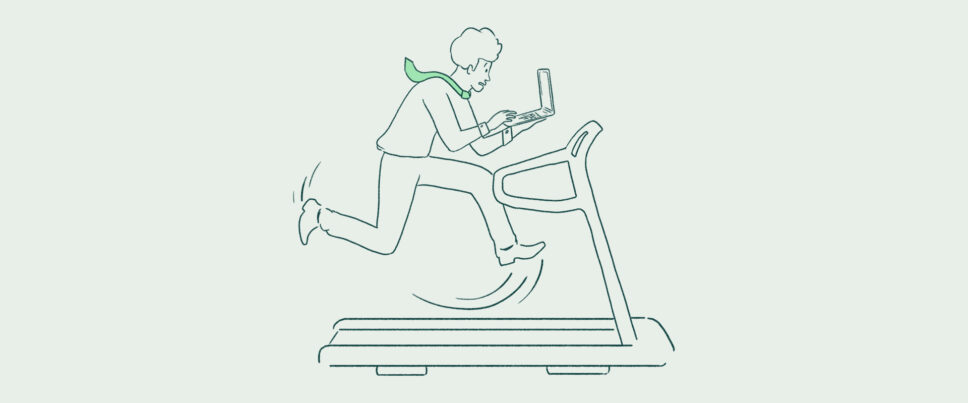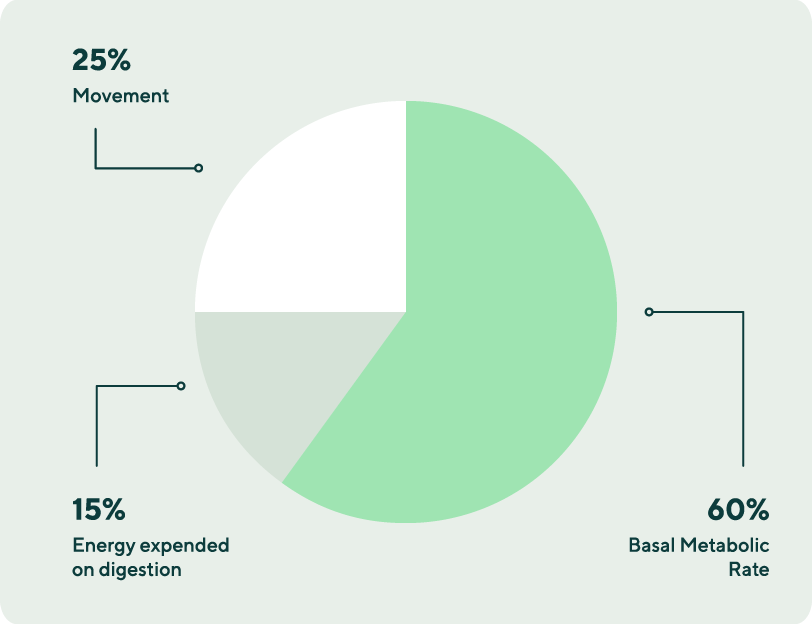
When it comes to losing weight and looking after our health, we often place too much emphasis on formal exercise like running, cycling or lifting weights. And while there are many benefits to moving our bodies in these ways (which we’ll cover in future articles), this isn’t the only form of movement that’s good for us – introducing NEAT!
NEAT stands for Non-Exercise Activity Thermogenesis. Put simply, NEAT refers to the energy we expend carrying out any daily activity that isn’t sleeping, eating or formal exercise (a.k.a Exercise Activity Thermogenesis or EAT). Some types of NEAT include:
- Walking
- Working
- Standing
- Cleaning
- Gardening
- Fidgeting
The science behind NEAT
To help explain the science behind NEAT, we need to understand a little bit about how our bodies expend energy or calories.

Our Basal Metabolic Rate – the energy our bodies use to carry out vital functions to survive – accounts for around 60% of our Total Daily Energy Expenditure. Around 10 to 15% of our energy is expended on digestion, and the remaining 25 to 30%, is used up through movement.
Surprisingly, the amount of energy expended as a result of formal exercise is thought to be minimal whether an individual is sedentary or exercises regularly. Most of the energy we expend through movement is from non-exercise activity thermogenesis. That doesn’t mean we should discount formal exercise altogether, but hopefully, it’s helpful to know that we don’t need to focus on exercise alone to increase our daily movement and the amount of energy we burn!
The benefits of NEAT
Research shows that NEAT can play a significant role in our long-term weight-loss progress and overall health. Increasing our NEAT levels can also be especially helpful if there are barriers to doing formal exercise, such as time, energy or injury.
And if we still haven’t convinced you that NEAT is important, in addition to helping us manage our weight, increase our physical activity levels, and live a less sedentary lifestyle, its benefits can include:
- Reduced risk of chronic diseases like type 2 diabetes and cardiovascular disease
- Improved blood sugar control
- Increased fat loss
- Improved mental health
- Better recovery from exercise
- Improved mobility
- It’s also simple, free, and accessible for most people!
How to increase your NEAT levels
The good thing about NEAT is that you’re likely already doing much more than you realise! Perhaps you’re on your feet all day for your job, you walk the dog, do plenty of housework, or are a bit of a fidgeter. Below are some simple tips to increase your non-exercise activity thermogenesis:
- Park further away from your workplace/shops
- Use the toilets that are further away at work
- Take the stairs instead of the lift
- Get off the bus a stop earlier
- Instead of driving or taking public transport to school or work, walk or cycle where possible
- If you work from home, consider going for a short walk before and after work, treat it as a ‘fake commute’!
- Use a standing desk
- Set a reminder every hour to get up from your desk and walk or stretch
- Go for walking meetings
- Play with your children or pets
- Do more of your household chores by hand
Take Action ⚡
- Take some time to think about the different forms of NEAT you already do – it may be more than you think!
- What other forms could you incorporate into your life?
- Think about the steps you’re going to take to implement more of these forms of movement into your week.
When it comes to moving our bodies, formal exercise isn’t the only thing that counts. Non-exercise activity thermogenesis forms an important component of our overall activity levels. Research has shown that people who focus on increasing their general daily activity levels, rather than formal exercise alone, are more likely to maintain their weight loss and improve their health in the long term!
Von Loeffelholz C and Birkenfeld A. The Role of Non-exercise Activity Thermogenesis in Human Obesity. [Updated 2018 Apr 9]. In: Feingold KR, Anawalt B, Boyce, A, et al., editors. Endotext [Internet]. South Dartmouth (MA): MDText.com, Inc.; 2000. Available from: https://www.ncbi.nlm.nih.gov/books/NBK279077/
Chung N, Park MY, Kim K, Park HY, Hwang H, Lee CH, Han JS, So J, Park J, Lim K. Non-exercise activity thermogenesis (NEAT): a component of total daily energy expenditure. J Exerc Nutrition Biochem. 2018 Jun 30; 22(2):23-30. Doi: 10.20463/jenb.2018.0013. PMID: 30149423; PMCID: PMC6058072
While we've ensured that everything you read on the Health Centre is medically reviewed and approved, information presented here is not intended to be a substitute for professional medical advice, diagnosis, or treatment. It should never be relied upon for specific medical advice. If you have any questions or concerns, please talk to your doctor.




